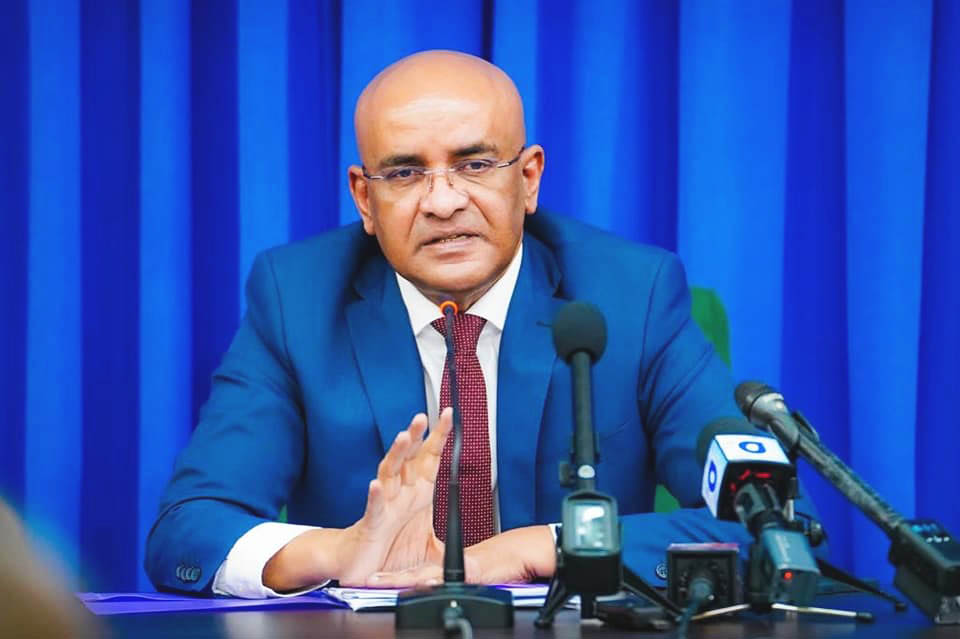From its conceptualisation, government has stressed the importance of safety and quality standards for the gas-to-shore project, Vice President Bharrat Jagdeo said, adding that the standards put in place were not left to be determined by the bidders.
“We said… you can bid using only GE and Siemens equipment. They are known for having good quality equipment globally so even from the conceptualisation stage the quality and safety standards have been determined so that is an important aspect for us in safety mitigation,” Jagdeo said in response to a question from Sunday Stabroek.
The question was raised in light of the recent death of Trinidadian Allanlane Ramkissoon, an employee of Massy who was burnt in an accident at the NiQuan Energy gas-to-liquids plant at Pointe-a-Pierre, Trinidad Newsday reported.
Newsday reported that Ramkissoon, an employee of Massy Energy Engineered Solutions Ltd (MEES), died on Father’s Day at a specialist centre in Columbia, Trinidad. He had sustained burns to approximately 40 per cent of his body, in addition to injuries when he fell some ten feet, trying to escape the flames in the room in which he had been trapped on June 15.
Pointe-a-Pierre MP David Lee again sounded an alarm about the safety of the plant, which had been shut down for approximately one year owing to an explosion in 2021. The plant was reopened in April 2022.
“… I am calling for the NiQuan to be shut down while a thorough investigation into the safety of that plant takes place. There must also be an investigation into the incident which led to the death of Mr Ramkissoon,” the Trinidadian politician said in the local news report.
Meanwhile, Jagdeo explained that the plant, slated to come on stream by 2025, will be constructed to the highest international standards.
“We determine what type of equipment we wanted. We did not leave it to chance so any bidder could have put in the equipment so that any type and quality of equipment be used, because we decided we wanted high quality equipment in the plant,” he indicated.
He further stated that on completion of the plant, there will be a greater level of certainty on safety mitigation measures that will be used for the operations.
Additionally, he disclosed, “We are still to determine who runs this facility. We have two options, getting trained local people or recruiting a firm to run the facilities for us. We are yet to determine that.”
The 300-megawatt (MW) Wales gas-to-shore power plant is slated for a late 2024 completion.
Background
Giving an update at the energy conference in February, gas-to-shore project lead Winston Brassington had said that at the end of December 2022, progress details showed that an engineering, procurement and construction model had been selected and a contract was signed in the same month.
The supervisory contractor had also been selected based on a competitive tender and that contract was executed in January. The Environmental and Social Impact Assessment (ESIA) is completed and this included public scoping exercises on the Terms of Reference (TOR) for the ESIA, submitting the ESIA, having the review of the ESIA completed, and getting an environmental permit issued to ExxonMobil. An interim construction permit has also been issued to the special-purposes company that will be set up to manage the project.
He also said that the pipeline route had been selected, route survey completed, and private land acquired under the Acquisition for Public Purposes Act at end of 2022, giving right-of-way for the on-shore pipeline.
The project will be executed in three phases – construction, operation, and decommissioning. It entails three aspects as well. The first is an approximately 220 kilometres of a offshore pipeline extending from new subsea tie-ins at the Destiny and Unity FPSOs in the Stabroek Block, to the proposed shore landing located some 3.5 kilometres west of the mouth of the Demerara River. The second is the onshore pipeline that is a continuation of the offshore line and extends about 25 kilometres from the landing site to the NGL plant. The third is the NGL plant and associated infrastructure that will be located about 23 kilometres upstream from the mouth of the Demerara River on the west bank.
Both the Liza Destiny and Liza Unity floating production storage and offloading vessels, which are operating in the offshore Stabroek Block, have pre-installed facilities to allow for the export of the associated gas along with crude production.





